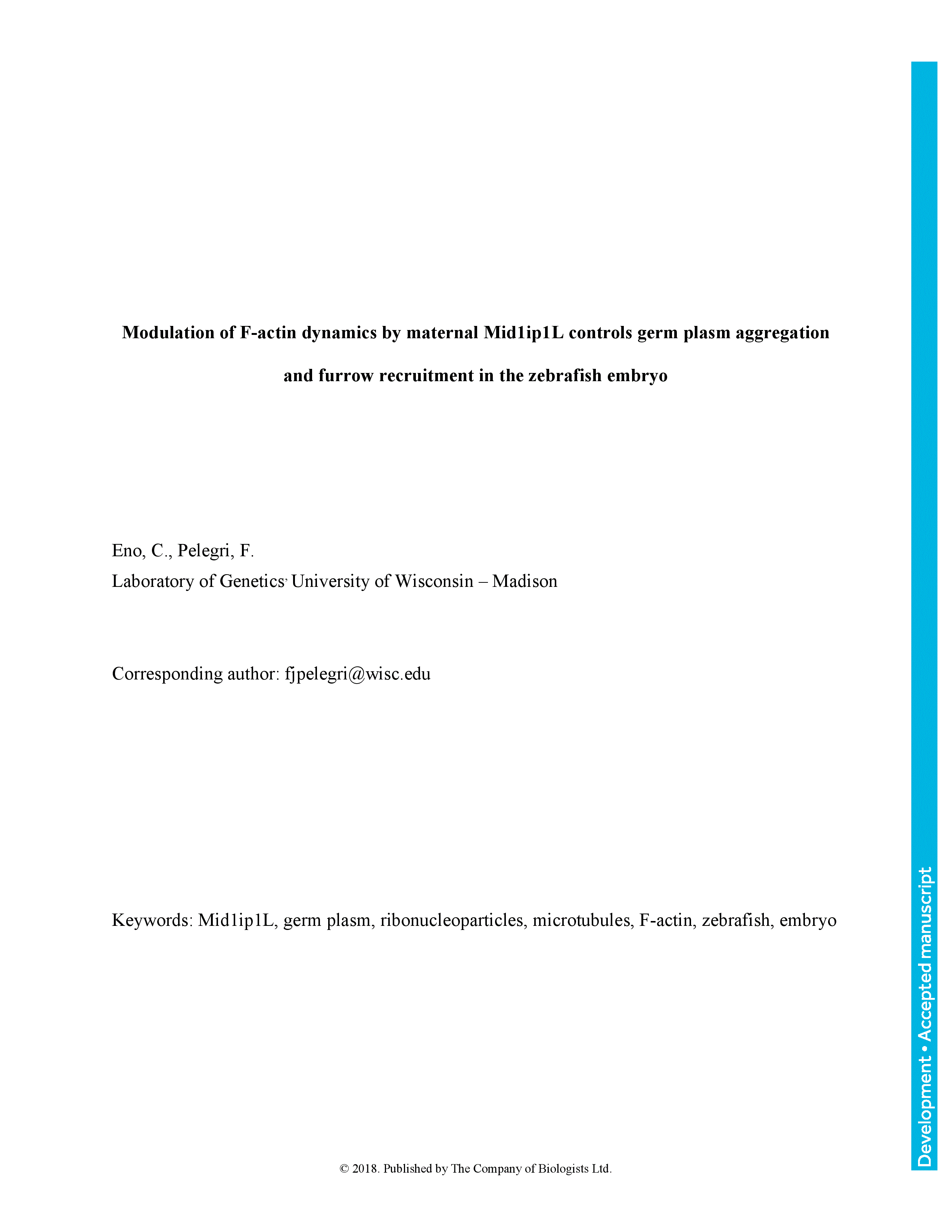During the early embryonic cell cycles, zebrafish germ plasm ribonucleoparticles (RNPs) gradually multimerize and become recruited to the forming furrows. RNPs multimerization occurs prior to and during furrow initiation, as forming aggregates move outward through their association with the tips of growing interphase astral microtubules. Germ plasm RNPs are also associated with short cortical F-actin. We show that, in embryos mutant for the cytoskeletal regulator mid1ip1L, germ plasm RNPs fail to become recruited to the furrow, accumulating instead at the periphery of the blastodisc. RNP aggregates are associated with zones of mid1ip1L-dependent cyclical local cortical F-actin network enrichments as well as contractions at both the cortex and the contractile ring. F-actin inhibition in wild-type embryos mimics the RNP peripheral accumulation defect of mid1ip1L mutants. Our studies suggest that a common mechanism underlies distinct steps of germ plasm RNP segregation. At the cortex, this process attenuates microtubule-dependent outward RNP movement to retain RNPs in the blastodisc cortex and allow their recruitment to the furrows. F-actin network contraction likely also facilitates higher order germ plasm RNP multimerization.
Modulation of F-actin dynamics by maternal mid1ip1L controls germ plasm aggregation and furrow recruitment in the zebrafish embryo
Currently Viewing Accepted Manuscript - Newer Version Available
C. Eno, F. Pelegri; Modulation of F-actin dynamics by maternal mid1ip1L controls germ plasm aggregation and furrow recruitment in the zebrafish embryo. Development 2018; dev.156596. doi: https://doi.org/10.1242/dev.156596
Download citation file:
Advertisement
Call for papers: Uncovering Developmental Diversity

Development invites you to submit your latest research to our upcoming special issue: Uncovering Developmental Diversity. This issue will be coordinated by our academic Editor Cassandra Extavour (Harvard University, USA) alongside two Guest Editors: Liam Dolan (Gregor Mendel Institute of Molecular Plant Biology, Austria) and Karen Sears (University of California Los Angeles, USA).
Choose Development in 2024

In this Editorial, Development Editor-in-Chief James Briscoe and Executive Editor Katherine Brown explain how you support your community by publishing in Development and how the journal champions serious science, community connections and progressive publishing.
Journal Meeting: From Stem Cells to Human Development

Register now for the 2024 Development Journal Meeting From Stem Cells to Human Development. Early-bird registration deadline: 3 May. Abstract submission deadline: 21 June.
Pluripotency of a founding field: rebranding developmental biology

This collaborative Perspective, the result of a workshop held in 2023, proposes a set of community actions to increase the visibility of the developmental biology field. The authors make recommendations for new funding streams, frameworks for collaborations and mechanisms by which members of the community can promote themselves and their research.
Read & Publish Open Access publishing: what authors say

We have had great feedback from authors who have benefitted from our Read & Publish agreement with their institution and have been able to publish Open Access with us without paying an APC. Read what they had to say.



